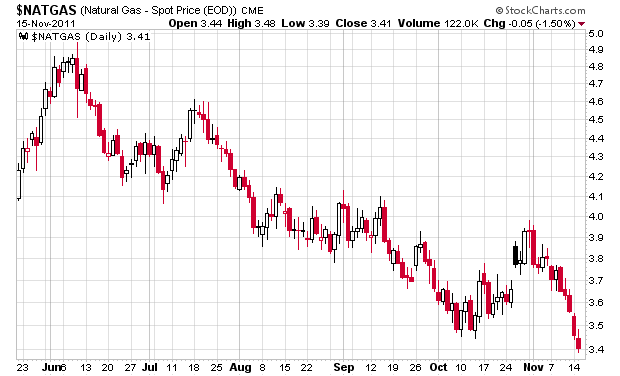Reviewing my predictions for 2011 (at the end of the 2010 annual report), I had the following predictions:
Predictions for 2011
Take these predictions with a grain of salt:
* The US Federal Reserve raises the short term rate by the end of the year. Thus, it follows that:
– The US Dollar will rise relative to the Canadian Dollar in 2011 (close of 2010: 0.9945 USD = 1 CAD).
– Spot Gold ends lower at the end of 2011 than the beginning of 2011 (close of 2010: US$1421/Oz).
* An equal-weighted basket of the five big Canadian banks (BMO, BNS, CM, RY, TD), purchased at the December 31, 2010 closing price, will underperform a 1-year CAD treasury bill yielding 1.4% on December 31, 2010. (NOTE: dividends and interest are not reinvested in this prediction).
* My unconventional prediction for 2011 is that US cash will outperform the S&P/TSX Composite Index (link) starting February 28, 2011.
All-in-all, not bad. While the federal reserve did not raise short-term interest rates, they did conduct “operation twist” (selling short-term maturities and buying long term ones) which did raise short term rates (e.g. 3-month LIBOR went from 0.3% to 0.48% currently). The US dollar is about 2% stronger relative to the CAD currently; while spot gold is approximately 20% higher than at the beginning of the year.
Currently an equal-weighted basket of the five big Canadian banks will have lost you money – Year-to-date and adding in dividends, BMO is up 4%; BNS is down 11%; CM is down 6%; RY is down 12%; and TD is down 1%. Right now the banks will have earned you a 5% loss; a 6% spread over a T-Bill.
Finally, the S&P/TSX has performed at -15% since February 28, 2010. The US dollar has gained 6% since February 28, 2010 over the Canadian dollar.
There is about a month and a half left to the end of the year, so these results will likely change.

